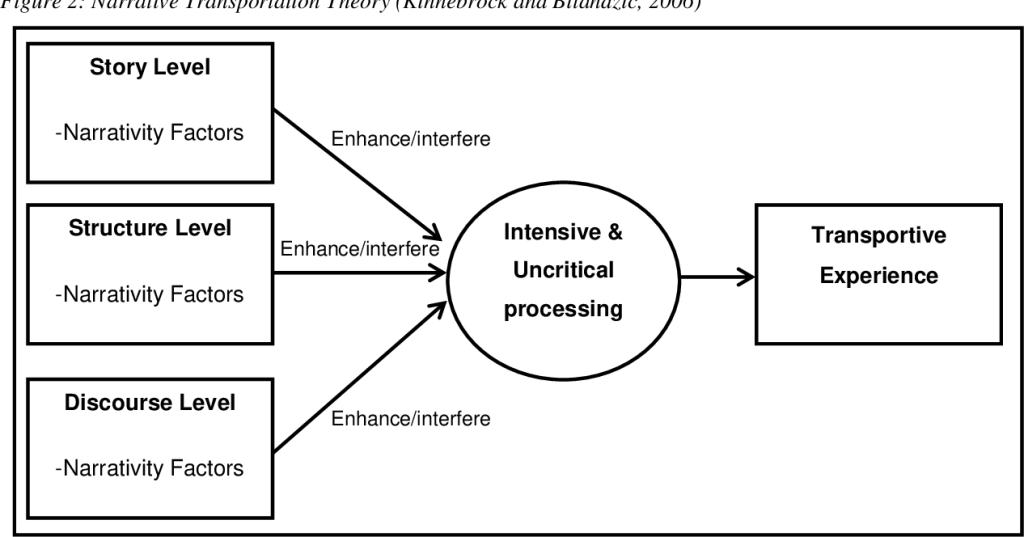The Extended Transportation Imagery Model (ETIM) is a theoretical framework that was developed to explain how media messages influence individuals’ attitudes, beliefs, and behaviors through the use of vivid imagery and narrative transportation. The model is particularly relevant for media students who are interested in studying the impact of media messages on audiences. In this response, I will discuss the key concepts of the ETIM, provide relevant citations, and offer criticisms of the model.

The Extended Transportation Imagery Model (ETIM)
The ETIM was first introduced by Green and Brock (2000) and was later extended by Moyer-Gusé (2008) to include additional constructs. The model posits that when individuals are exposed to media messages that contain vivid imagery and a compelling narrative, they are transported into the story world and experience a form of mental immersion. During this process of transportation, individuals become less aware of their immediate surroundings and are more likely to adopt the attitudes, beliefs, and behaviors presented in the story.
The ETIM proposes that transportation is influenced by several factors, including the characteristics of the media message, the individual’s personal involvement with the topic, and the individual’s cognitive and emotional responses to the message. Additionally, the model suggests that transportation can lead to long-lasting effects on attitudes and behavior, particularly when the narrative is congruent with the individual’s pre-existing beliefs and values.
Citations
Green and Brock (2000) initially introduced the ETIM in their study of the effects of narrative persuasion on attitudes and behavior. Moyer-Gusé (2008) later extended the model to include additional constructs, such as transportation into the story world and narrative engagement. The ETIM has been used in a variety of studies to examine the impact of media messages on attitudes and behavior, particularly in the areas of health communication and entertainment media (e.g., Moyer-Gusé, Mahood, & Brookes, 2011; Slater & Rouner, 2002).
Criticisms
While the ETIM provides a useful framework for understanding the impact of media messages on audiences, it has been subject to several criticisms. One criticism is that the model does not adequately account for individual differences in the extent to which people are transported into the story world. Some individuals may be more susceptible to transportation than others, and the model does not address these differences (Green, 2004).
Another criticism is that the model does not consider the role of social context in the process of transportation. For example, a media message may be more or less persuasive depending on the social norms and values of the audience (Tukachinsky, Mastro, & Yarchi, 2015). Additionally, the model does not address the potential for counter-arguing, or the process by which individuals actively resist persuasive messages (Pfau & Van Bockern, 2004).
Conclusion
The Extended Transportation Imagery Model provides a useful framework for media students interested in studying the impact of media messages on audiences. The model proposes that transportation into the story world is a key mechanism through which media messages can influence attitudes and behavior. However, the model has been subject to criticisms related to its failure to account for individual differences in susceptibility to transportation and its neglect of social context and counter-arguing. Nonetheless, the model continues to be an important theoretical framework for media scholars and practitioners alike.
References:
Green, M. C. (2004). Transportability: A theoretical concept and construct for the study of narrative effects. Journal of Communication, 54(3), 469-488.
Green, M. C., & Brock, T. C. (2000). The role of transportation in the persuasiveness of public narratives. Journal of Personality and Social Psychology, 79(5), 701-721.
